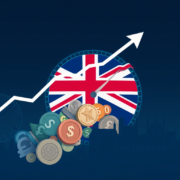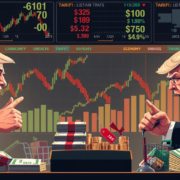July Jobs Report Shows Evidence of Economic Slowdown: What It Means for the U.S. Economy Ahead
July Jobs Report Highlights Sharp Slowdown in U.S. Economy
The July jobs report fuels debate over the U.S. economy. Its data shows a weak labor market. The report hints that growth fades more than standard counts show.
Key Takeaways from the July Jobs Report
- Nonfarm payrolls increased by only 73,000, a number that falls well short of modest forecasts.
- The job numbers for May and June drop. The three‐month average sits at 35,000 – less than one third of last year’s pace.
- The soft labor market makes it seem that the economy cools down more than GDP numbers reveal.
Luke Tilley, Chief Economist at Wilmington Trust, said,
"We see a slow down across our economy. I ask if it may turn into a recession."
He sees a 50% chance of a recession. He ties long tariff effects to lower spending by consumers and businesses. In Q1 2025, spending accounted for 68% of all activity.
Tariff Effects and Price Changes
Tilley points out tariffs set under President Donald Trump make imports cost more. This fact cuts spending on travel, fun, and leisure. The result is that price rises stay low despite the extra fees.
Mixed Signals: GDP Growth vs. Weak Job Numbers
GDP grew at a seasonally adjusted annual rate of 3% in Q2 2025, yet the first half of the year averaged only about 1.2% growth. Consumer spending barely grew by 1%. A boost in Q2 came when imports dropped. Firms had moved many orders forward in Q1 from the threat of higher fees.
Economists stay cautious:
- Gus Faucher, Chief Economist at PNC, expects slow growth later in 2025 and early 2026 but does not call a recession. He points out that higher tariff fees add risk.
- Goldman Sachs sees growth dropping to nearly 1% in the last two quarters. This drop comes from weaker job gains, extra fees, lower spending, and cuts in cash help.
Political and Policy Views
White House staff say the economy stays sound and expect fixes with President Trump’s One Big Beautiful Bill Act.
After the report, President Trump attacked the data. He called the figures "FAKED" and "RIGGED" on social media and fired the head of the Bureau of Labor Statistics.
Kevin Hassett, National Economic Council Director, noted the revised numbers with care. He stressed that basic strengths still exist and there is hope for the rest of the year.
Fed Watch: Rates and Outlook
The Federal Reserve kept interest rates steady. Fed staff see the labor market as strong but may relook if new data shows more weakness.
Other pointers suggest strain:
- Housing data shows fewer buyers even as prices and mortgage rates stay high. A 30‐year fixed rate nears 7%.
- Factory orders dropped by 4.8% in July, the largest fall since early 2024.
- The Conference Board’s Employment Trends Index hit its lowest mark since late 2024. Experts like Jim Paulsen see these signals as ways to read a coming downturn.
Market Mood and Investor Views
The stock market shows strength amid these risks. The Dow Jones fell 1.7% over the past month, yet a Monday rally came as hopes grew for a lasting U.S.-EU tariff pact.
George Mateyo, Chief Investment Officer at Key Private Bank, said,
"There has been much calm as many expect good times to hold on. Still, doubt is high, and we advise clients to move funds from riskier areas."
Market views on Fed moves shift quickly. Chances of a rate cut in September now near 90% as key reports and Fed talks come up.
Conclusion
The July jobs report shows that the U.S. economy slows down. This news makes policy makers and investors watch close. A full recession is not a sure call, yet growth seems set to drop in the coming months. Tariff fees and lower spending add tension to the scene.
Stay tuned as more news comes in to help guide you through these uncertain times.









